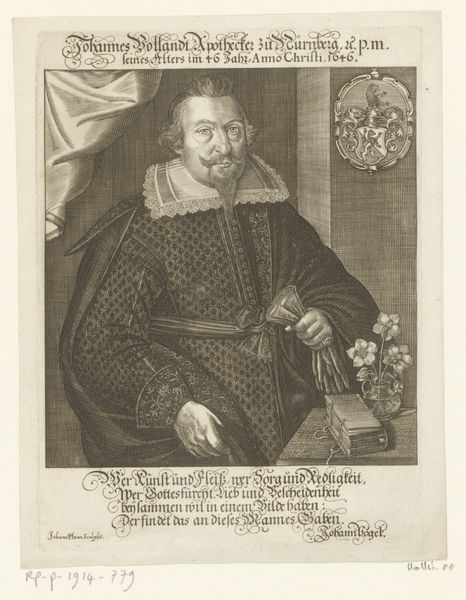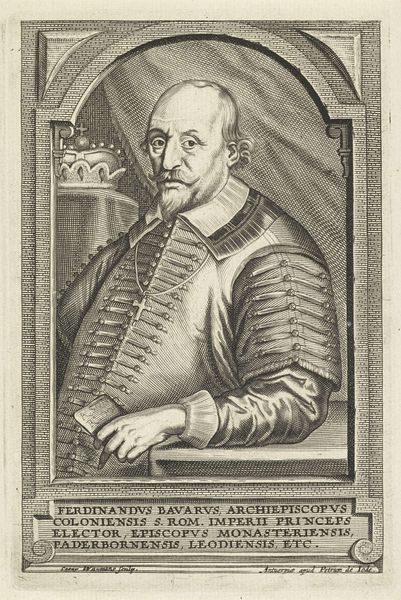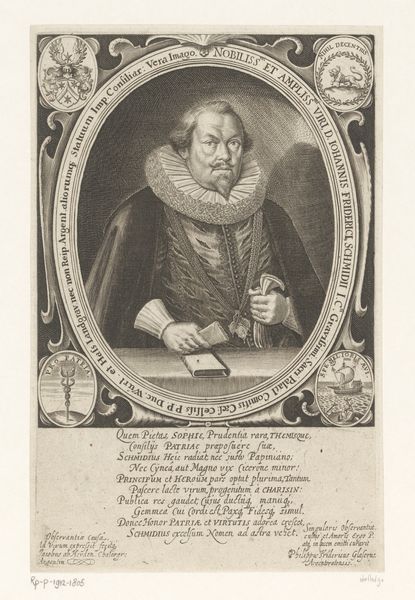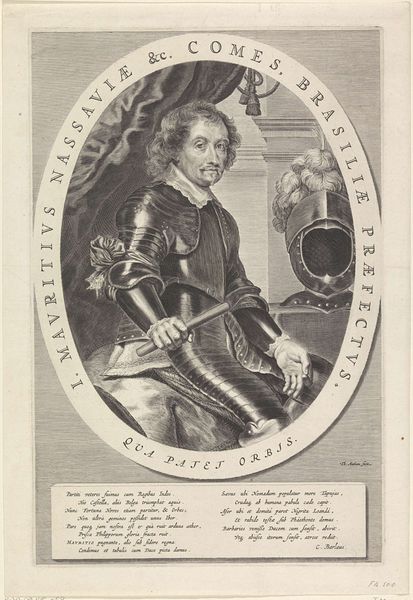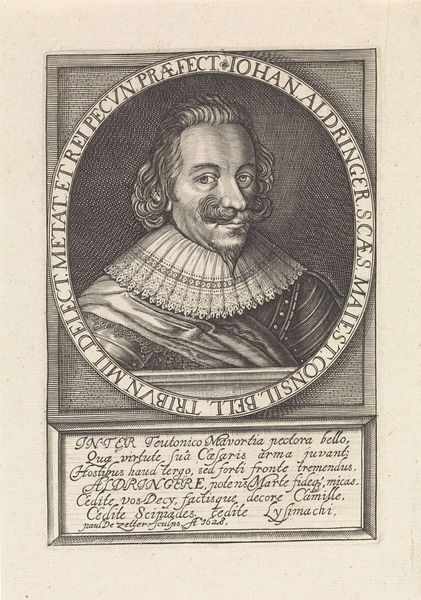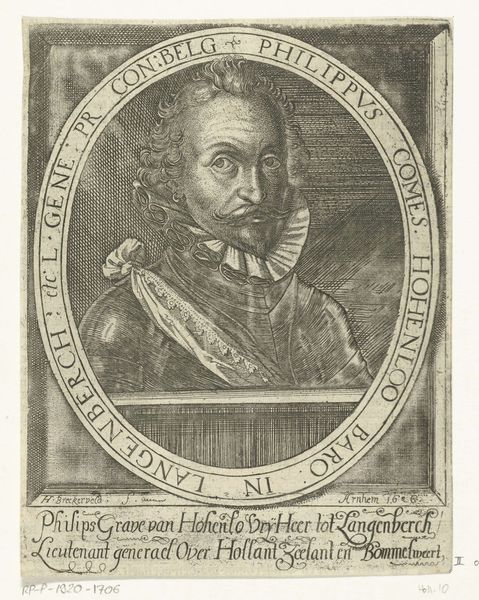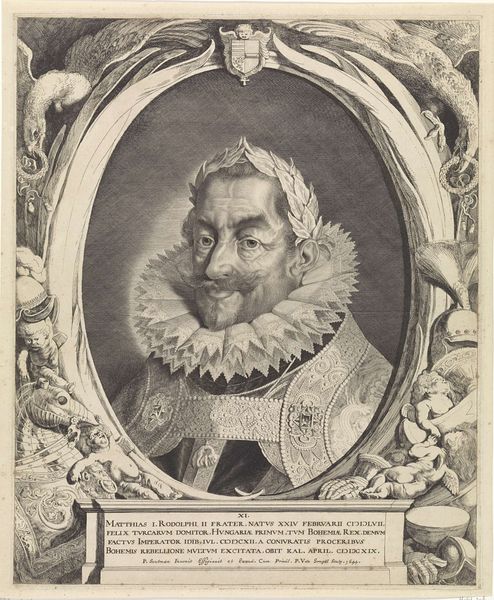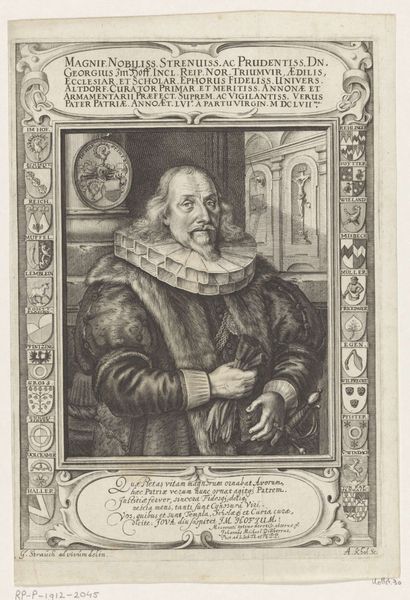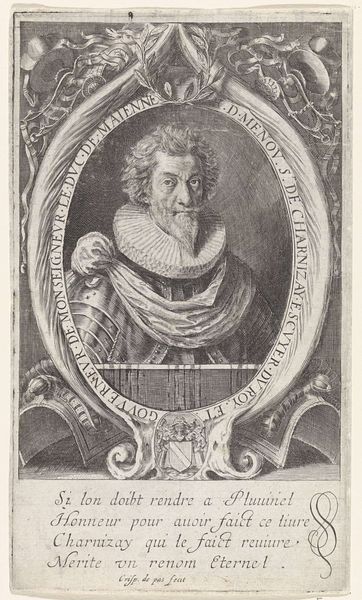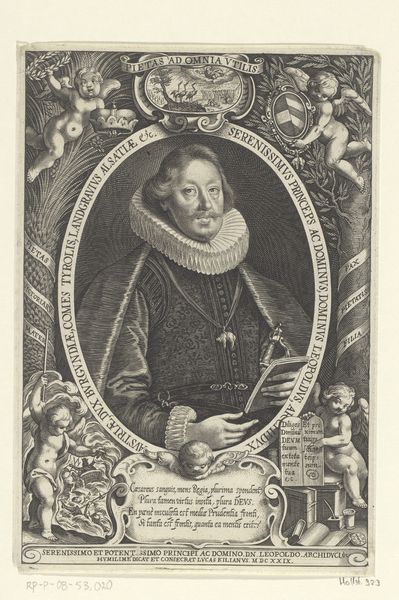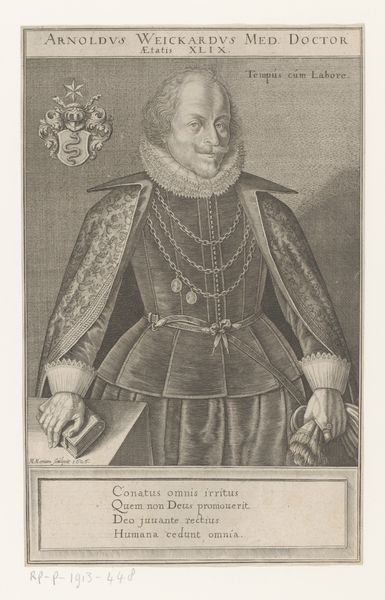
print, engraving
#
portrait
#
baroque
# print
#
old engraving style
#
historical photography
#
engraving
Dimensions: height 240 mm, width 156 mm, height 337 mm, width 251 mm
Copyright: Rijks Museum: Open Domain
Curator: Here at the Rijksmuseum, we have an engraving entitled "Portret van Francisco de Moncada, markies van Aytona," a Baroque-style portrait of Francisco de Moncada made by Lucas Vorsterman I. It's estimated to date somewhere between 1646 and 1675. Editor: My immediate reaction is one of formality, yet something about the lighting seems to soften what might otherwise be a very severe image. It draws the eye directly to his face, his subtle smirk, really. Curator: Indeed. Vorsterman’s strategic use of light, characteristic of Baroque portraiture, lends depth and dimensionality. More importantly, it reinforces Moncada's presence as a figure of power. Note his confident posture, the details in his garments… They all speak to a very particular visual language. Editor: Absolutely, the composition reflects that carefully. The placement of the armor in the background, along with Moncada’s hand grasping his baton, anchors him in this world of leadership. There is a very conscious presentation of military and aristocratic identity on display. But how does Vorsterman employ engraving here to contribute meaning? Curator: Engraving, with its precise lines and textures, creates an illusion of depth and tangible materiality. Look closely, you’ll notice how fine the lines are, capturing even the slightest texture of the fabric, the sheen of the armor. But this also symbolizes the clarity and permanence that Moncada sought in his legacy. Engravings, after all, allowed for the widespread dissemination of images. Editor: So it’s about not only the individual, but how that persona gets transmitted and multiplied, embedded in a cultural consciousness. I hadn't considered that. But then the contrast, between the fleeting nature of individual lives versus the seeming permanence of image… It's a paradox that underscores the potency of portraiture itself. Curator: Exactly. Vorsterman understood the ability of images to extend a ruler’s influence beyond temporal bounds. The symbolism and meticulous craftsmanship immortalize Francisco de Moncada in the collective memory of the time. Editor: This detailed analysis reveals how much historical context and layered meaning is embedded within a seemingly straightforward portrait. Curator: By understanding the visual codes, artistic methods, and social history that shape an artwork, it really enriches our experience, and opens a portal to a past that very much resonates today.
Comments
No comments
Be the first to comment and join the conversation on the ultimate creative platform.
